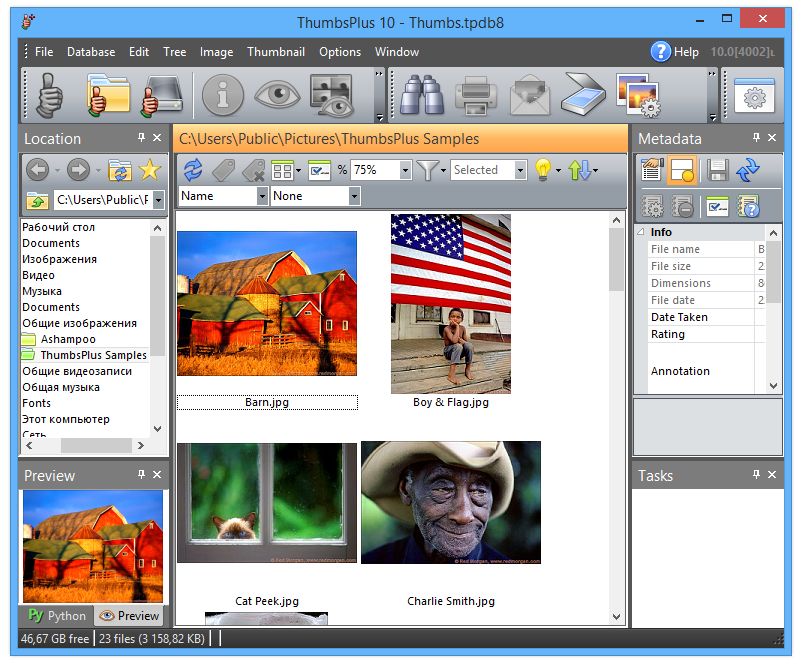

- #Thumbsplus 10 maximum database size for free#
- #Thumbsplus 10 maximum database size full#
- #Thumbsplus 10 maximum database size windows#
In fact I could do such a tool myself using some programming language that supports SQL access (e.g.
#Thumbsplus 10 maximum database size windows#
(note: to prevent that the timestamp of the image files is updated in Windows when you write to their IPTC headers, be sure to use Options | Preferences | General | 'Retain original file date/time when quick process turning or editing IPTC') Voila, that's one gallery moved to the new database! (now for all the other galleries.) Then create a new SQLite database in TP10, have it copy the IPTC keywords to the database while it makes thumbnails, then search for all images with keyword 'GAL-Cats' and create a gallery 'Cats' for them.

For instance, if the gallery is named 'Cats', you could use the keyword 'GAL-Cats'.
#Thumbsplus 10 maximum database size full#
There is a work-around, but it would probably cost you a full day to do it: Go into each gallery, and use the IPTC editor to assign a unique keyword to all the files inside it. This information never is stored in the image files themselves. > The main purpose to use ThumbsPlus is the Galleries. I do hope that Cerious does not intend to force me to do this. Possible but obviously very nasty reverse-engineering: I could create a small database with either version of TP (maybe for TP10 by converting the TD4 to TPDB8), do an export and compare the generated files, and then do a lot of experimenting. (I suppose TP10 does have a text file import, similar to what TP7 has.)īut to do this, I obviously would need to have a documentation about the fields, the databases use in both versions. I suppose I can do this by creating an appropriate converter that either accesses both databases to do a direct conversion or do a program that reads the text file exported by TP7 and converts it in a text file that can be imported by TP10. TD4 database in the correct TP4 SQLite format. So I suppose the only way to go is to directly convert the. AFAIK it's not possible to do convert a "close-to full" TP7 "Access" database to TP 10 format, as some additional information will be stored and burst the 2 GB limit. TPDB8 format (from which you can then convert it to SQLite3), >However, before trying that, you would first have to use TP10 to convert your. > Another (experimental) approach would be to use a generic MDB-to-SQLite3 converter to see if that produces a working database. The main purpose to use ThumbsPlus is the Galleries. Then create an SQLite3 database in TP10, thumbnail the images and have all this information copied into the database automatically. >If your images are JPG/TIF/PNG, you could use the TP7 IPTC editor to copy your keywords and annotations into the image files. I had assumed that after creating an SQLIte database, TP7 would be able to use it's SQL interface to access it. TPDB8 format (from which you can then convert it to SQLite3), and you would have to create a new SQLite3 database in TP10 and thumbnail a few images so you can examine its structure, and compare the converted database to it to see if all required tables and field definitions are present in the converted database.īad news. However, before trying that, you would first have to use TP10 to convert your.
#Thumbsplus 10 maximum database size for free#
Several converters appear to be available for free when you Google for them. Then create an SQLite3 database in TP10, thumbnail the images and have all this information copied into the database automatically.Īnother (experimental) approach would be to use a generic MDB-to-SQLite3 converter to see if that produces a working database. If your images are JPG/TIF/PNG, you could use the TP7 IPTC editor to copy your keywords and annotations into the image files. Is there any help (other than installing a network server box with MSSQL) ? Either by upgrading to TP10, or by using TP7 with SQLite ?


 0 kommentar(er)
0 kommentar(er)
